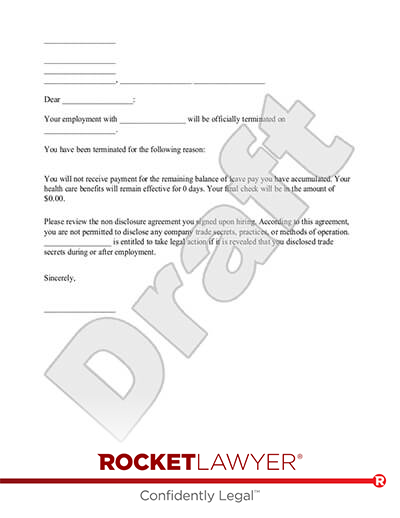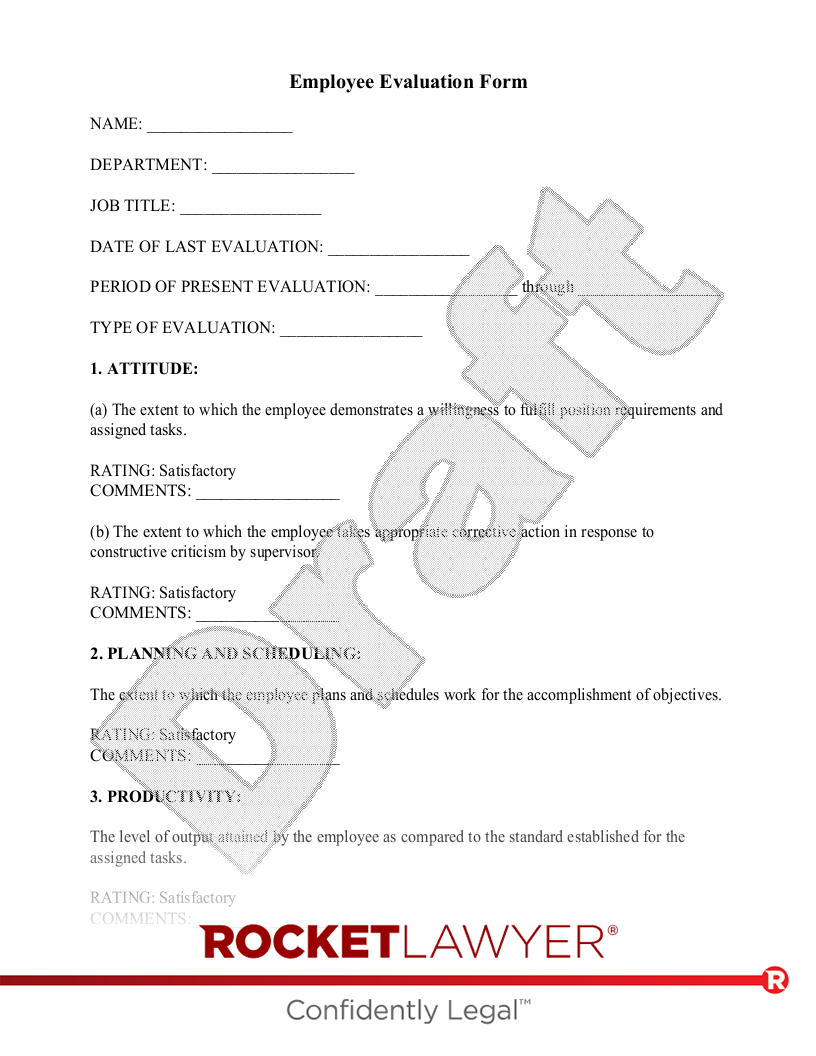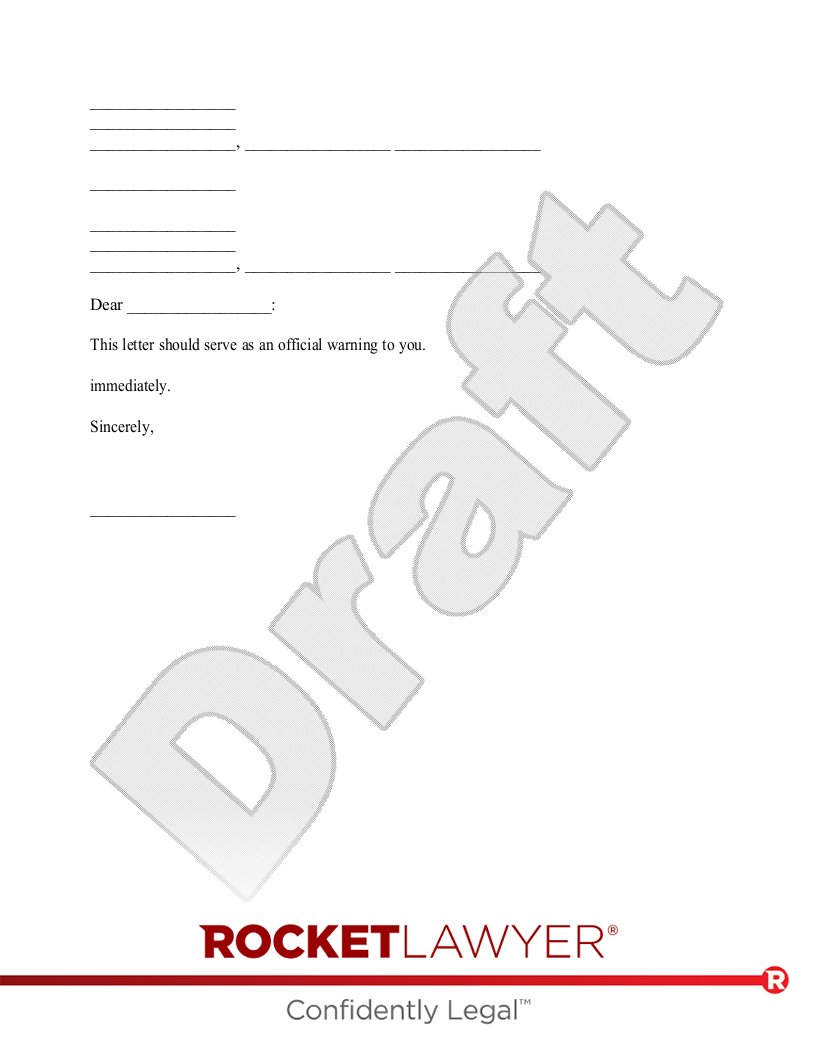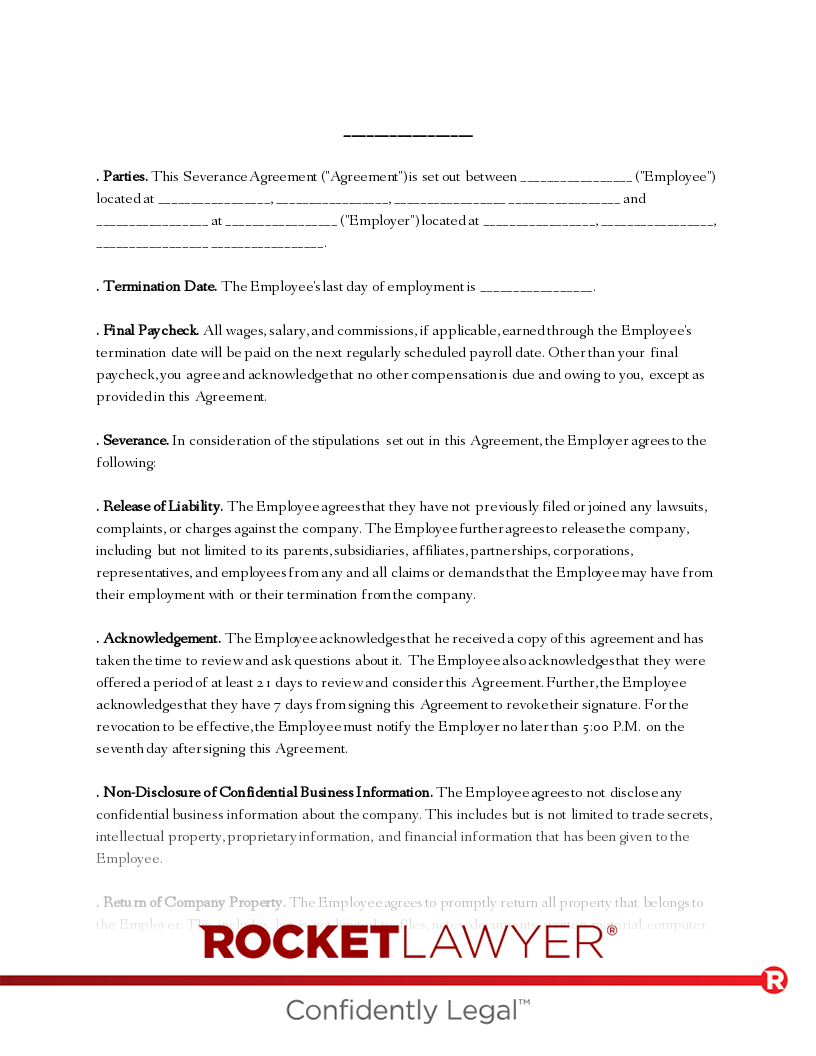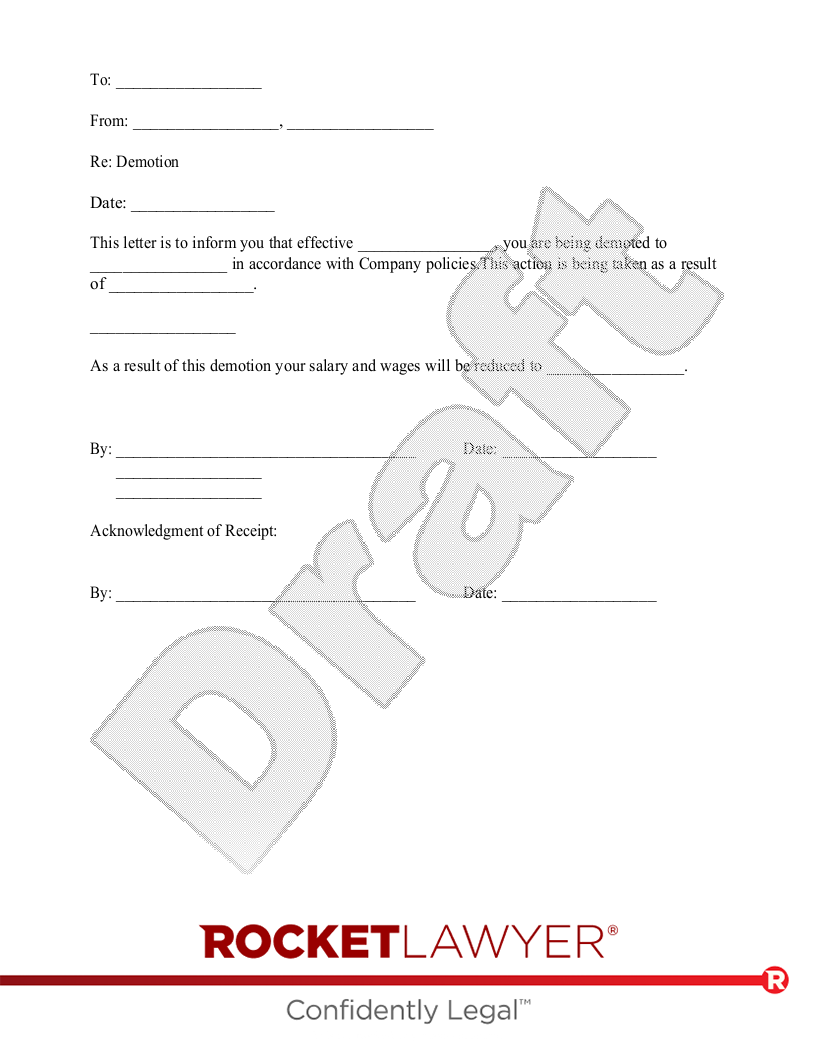Letting go of an employee can be a relief, or in the case of a forced layoff, it can be very difficult. But being a professional means putting the notice of employment termination in writing. Let the employee know why the decision is being made and what both of your responsibilities are.
Here's what you may want to include in your Termination Letter:
Basic information: Note who is being terminated, the name of the company, and the name of the person who is handling the cessation of work. You'll also want to include the date, both of the letter of separation and the date the termination becomes effective, if those dates are different.
Reason for employee termination: As noted above, sometimes, a termination is out of your control. You may be an HR manager, forced to lay off an otherwise productive employee because the business is going through a rough patch. On the other hand, you might be firing an employee for verbal abuse, excessive tardiness, or poor performance. With a Termination Letter, your employee will get a better understanding of why they're being let go.
Lead up: If you are terminating an employee for reasons under their control, make sure to note whether they were warned, how many times, and whether those warnings were verbal, written, or both.
Company property: Whether it's a laptop you provided, a company car, or just a key card, chances are your employee has something that belongs to the company. Of course, in some cases of employee termination, certain property is given as a perk of employment. Make sure you note if you'll be asking for property back.
Vacation time and final paycheck: If your employee has accrued vacation time, chances are you're required to pay them for what they've accrued. But laws vary and, if you're dealing with a contractor or part-time employee, you may not have to pay out for vacation or sick leave.
What you will have to do is pay your employee what they're owed. Include what date they'll be paid through and how they'll receive their last paycheck: in person, by mail, or direct deposit. It's often smart to pay your employee then, so that when the Termination Letter is signed, employment is officially over.
Health insurance, 401K, and other benefits: If you've provided benefits like health insurance or retirement savings, you may want to make sure your employee knows how this will be handled, and that it is outlined in the Termination Letter. Provide them with information about continuing their health insurance and when it runs out. Let them know where their savings are. Your work relationship may be over, but your employee still has a future. Giving them this information up front will make their transition much easier.




